Inchworm Bakery started just a few days after the Cottage Food Bill was signed into law. Since then, I, fellow farmers market vendors, and others interested to starting a cottage food business have wondered what exactly are the rules. Below are the rules, and answers to most questions.
I learned for example that I could not make veggies samosas that I was planning to feature at the market this week. Nor could I put some parmesan cheese on my foccaccia bread. While there are some limits to what can be produced in a non-inspected kitchen, and the ways we can markets our goods, the Cottage Food Law does offer a good variety of possibilities.
Inchworm Bakery makes pies, cookies, and foccaccia bread. I noticed that the law allows nuts and coated nuts, and we might play around with them too.
Below is the text from a document from Michigan Dept of Ag. The two links are to the specific PDF documents.
Good Luck to fellow Cottage Food Operator. Please tell me about your business. I will be happy to post a profile on this blog.
http://michigan.gov/documents/mda/MDA-CFFAQ-MASTER_327558_7.pdf
http://michigan.gov/documents/mda/MDA_CFLblngGuide-MASTER_327559_7.pdf
Michigan Department of Agriculture
Frequently Asked Questions
Cottage Foods
The Cottage Food Law, enacted in 2010, allows individuals to manufacture and store certain types of foods in an unlicensed home kitchen.
What are Cottage Foods?
Specific types of foods that you manufacture in the kitchen of your single family domestic residence.
What does a single family domestic residence include?
This is the place where you live, whether you own the home or are renting. So an apartment, condominium or a rental home all could be a single family domestic residence. It does not include group or communal residential settings, such as group homes, sororities or fraternities.
What types of Cottage Foods can I produce in my home?
Non-potentially hazardous foods that do not require time and/or temperature control for safety.
Examples include:
Breads
Similar baked goods
Vinegar and flavored vinegars
Cakes, including celebration cakes (birthday, anniversary, wedding) a label with notification and ingredients will need to accompany the cake to the purchasers
Fruit pies, including pie crusts made with butter, lard or shortening
Cookies
Dry herbs and herb mixtures
Jams and jellies in glass jars that can be stored at room temperature
Popcorn
Cotton Candy
Non-potentially hazardous dry bulk mixes sold wholesale can be repackaged into a Cottage Food product. Similar items already packaged and labeled for retail sale can not be repackaged and/or relabeled
Chocolate covered: pretzels, marshmallows, graham crackers, rice krispy treats, strawberries, pineapple or bananas
Coated or uncoated nuts
Dried pasta made with eggs
What types of Cottage Foods are NOT ALLOWED to be produced in my home? Potentially hazardous foods that require time and/or temperature control for safety.
Examples include:
Meat and meat products like fresh and dried meats (jerky)
Fish and fish products like smoked fish
Raw seed sprouts
Canned fruits or vegetables like salsa or canned peaches including canned fruit or vegetable butters like pumpkin or apple butter
Canned pickled products like corn relish, pickles or sauerkraut
Pies that require refrigeration to assure safety like banana cream, pumpkin, lemon meringue or custard pies
Milk and dairy products like cheese or yogurt
Cut melons
Garlic in oil mixtures
Beverages
Ice and ice products
Cut tomatoes or cut leafy greens
Foccaccia style breads with fresh vegetables and/or cheeses
Food products made from fresh cut tomatoes, cut melons or cut leafy greens
Food products made with cooked vegetable products that are not canned
Barbeque Sauce, Ketchup, Mustard
Are pet treats included under the Cottage Food Law?
No- the Cottage Food Law applies to human grade food only. For more information about pet treat licensing, please visit http://www.michigan.gov/mda-feed.
How do I sell my Cottage Foods?
You may sell your Cottage Foods directly to the consumer at farmers’ markets, farm stands, roadside stands and similar venues. The key is you are selling it directly to the consumer. You cannot sell your Cottage Foods to a retailer for them to resell or to a restaurant for use or sale in the restaurant. You cannot sell your Cottage Foods over the internet, by mail order, or to wholesalers, brokers or other food distributors who will resell the Cottage Foods.
Why can’t I sell my Cottage Foods to my favorite restaurant or grocery store?
The Michigan Food Law Cottage Food amendments do not allow this. Because the kitchen is unlicensed and not inspected, the safe food handling practices are not evaluated by any food safety official. Since the safe food handling practices are not being evaluated, the food is not considered an approved source for use in a restaurant or grocery store. Also, it is not possible for the final consumer to discuss your food safety practices with you, as you would not be selling or serving the product to the consumer.
Do I have to put a label on my Cottage Foods?
Yes, you are required to label your Cottage Foods. Here is an example of a label that should help you develop your own labels.
MADE IN A HOME KITCHEN NOT INSPECTED BY THE MICHIGAN DEPARTMENT OF AGRICULTURE
Chocolate Chip Cookie
Artie Pinkster
123 Foodstuff Lane
Casserole City, MI 82682
Ingredients: Enriched flour (Wheat flour, niacin, reduced iron, thiamine, mononitrate, riboflavin and folic acid), butter (milk, salt), chocolate chips (sugar, chocolate liquor, cocoa butter, butterfat (milk), Soy lecithin as an emulsifier), walnuts, sugar, eggs, salt, artificial vanilla extract, baking soda
Contains: wheat, eggs, milk, soy, walnuts
Net Wt. 3 oz
The basic information that must be on the label is as follows:
Name and address of the Cottage Food operation.
Name of the Cottage Food product.
The ingredients of the Cottage Food product, in descending order of predominance by weight. If you use a prepared item in your recipe, you must list the sub ingredients as well. For example: soy sauce is not acceptable, soy sauce (wheat, soybeans, salt) would be acceptable, please see the label above for further examples.
The net weight or net volume of the Cottage Food product.
Allergen labeling as specified in federal labeling requirements.
The following statement: “Made in a home kitchen that has not been inspected by the Michigan Department of Agriculture” in at least the equivalent of 11-point font and in a color that provides a clear contrast to the background.
What does allergen labeling as specified in federal labeling requirements mean?
It means you must identify if any of your ingredients are made from one of the following food groups: milk, eggs, wheat, peanuts, soybeans, fish (including shellfish, crab, lobster or shrimp) and tree nuts (such as almonds, pecans or walnuts). So if you have an ingredient made with a wheat based product, you have two options:
1.
Include the allergen in the ingredient list. For example, a white bread with the following ingredient listing: whole wheat flour, water, salt and yeast. In this example the statement Whole Wheat Flour, meets the requirements of federal law.
2.
Include an allergen statement (“Contains:”) after the ingredient list. For example a white bread, with the following ingredients: whole wheat flour, water, sodium caseinate, salt and yeast. Contains wheat and milk.
The “Contains” statement must reflect all the allergens found in the product. In this example, the sodium caseinate comes from milk.
Are there any special requirements for tree nuts labeling for allergens? Yes, if your Cottage Food has tree nuts as an ingredient you must identify which tree nut you are using.
For example, if you made the following product:
Nut Bread, an acceptable ingredient list would be: wheat flour, water, almonds, salt, yeast. The following would not be acceptable: flour, water, nuts, salt, yeast.
Are there any other limits I need to know about Cottage Foods?
Yes, you are limited in the amount of money you can make selling Cottage Foods – which is $15,000 gross sales annually per household.
Can I make the Cottage Food products in an outbuilding on my property, like a shed or a barn?
No, the law requires the Cottage Food products be made in your kitchen and stored in your single family domestic residence. Approved storage areas include the basement and attached garage of the home where the food is made.
Will I need to meet my local zoning or other laws?
Yes, the Cottage Food exemption only exempts you from the requirements of licensing and routine inspection by the Michigan Department of Agriculture.
What oversight does the Michigan Department of Agriculture have over my Cottage Food operation?
Cottage Food operations are considered to be food establishments, but will not have to meet most requirements outlined in the Michigan Food Law. In all cases, food offered to the public in Michigan must be safe and unadulterated, regardless of where it is produced. As a Cottage Food Operator, it is your responsibility to assure the food you make is safe. In the event a complaint is filed or a foodborne illness is linked to your food, the Michigan Department of Agriculture will investigate your operations as part of our responsibility under the Michigan Food Law. As part of that investigation, it may be necessary for the Michigan Department of Agriculture to enter and inspect your Cottage Food production and storage areas, view and copy records, and take photos during the course of a complaint investigation. The Michigan Department of Agriculture also has the right to seize product suspected of being adulterated, order corrections of label violations, or require you to discontinue making unapproved products.
Where can I get a copy of the Michigan Food Law?
The sections of the Food Law where you can find the definitions, exemptions and requirements for Cottage
Food is:
Section Title
Short description
Section Number
Definitions
Definitions of terms
289.1105 (H,I, and K (i)(ii))
Licensing
Exemptions
289.4102
Are there any additional requirements regarding my home on-site well or sewage system?
No, although annually testing your well for coliforms and nitrates is recommended. Contact your local health department for sampling containers and directions.
Does my equipment, stove and/or refrigerator need to be NSF (a food equipment evaluation group) approved?
As a Cottage Food operator, you would not be required to meet NSF standards for your equipment used to manufacture the Cottage Food product.
Can I bake bread in a wood fired oven?
Yes, as long as that oven is in your home kitchen.
Do I need to have a DBA for the Cottage Food law?
A DBA (Doing Business As) may be a requirement of your county or local municipality; you should contact your county offices to determine if a DBA is appropriate for you.
When are Cottage Food products subject to sales tax?
The Cottage Food amendments are to the Michigan Food Law. The amendments do require that the Cottage Food Operators meet all other provisions of law regarding businesses, including tax law. MDA recommends that you contact the Michigan Department of Treasury for further information on what food products are considered taxable. Their website is available through this link, Contact Treasury.
In general, sales tax is not charged on prepackaged foods that are not for immediate consumption.
If you have additional questions, please contact MDA-Info@michigan.gov; please include your zip code in your request.

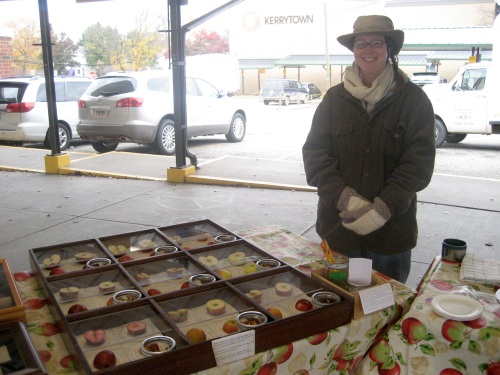
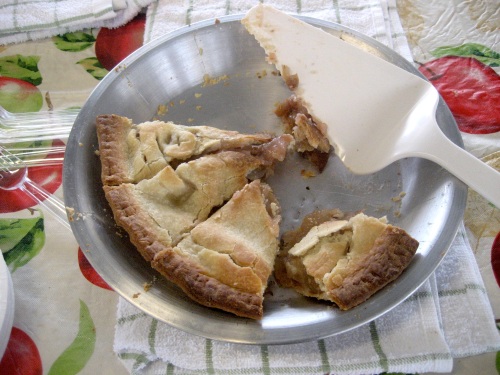
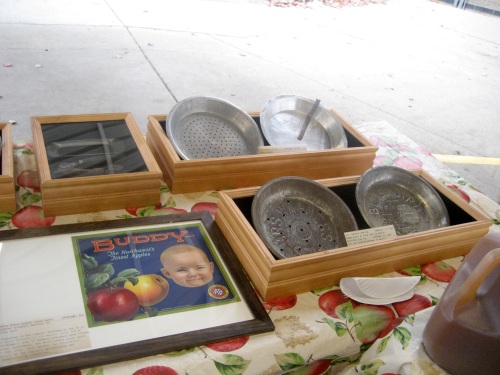
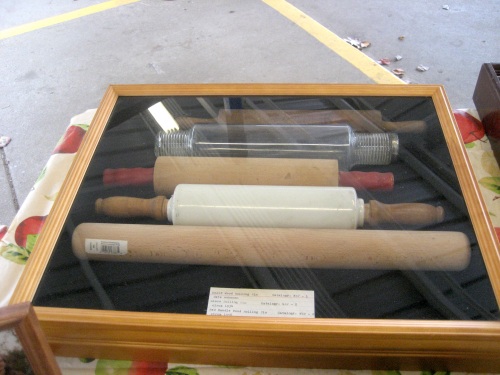
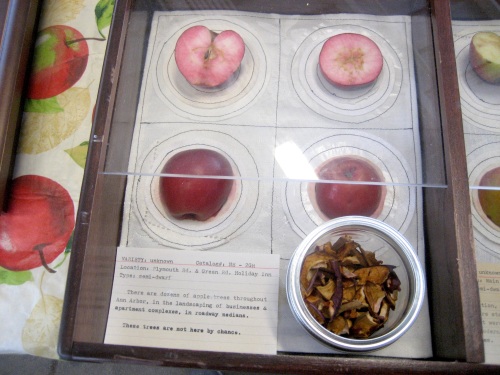

 Here is a cost breakdown of my local meal. I am still trying to find a local source for cooking oil, so I used olive oil. The meal came to $2.58 per serving, but cheaper local beans were available, so the meal could have cost $2.08.
Here is a cost breakdown of my local meal. I am still trying to find a local source for cooking oil, so I used olive oil. The meal came to $2.58 per serving, but cheaper local beans were available, so the meal could have cost $2.08. I was thinking sauerkraut again when I saw a purple cabbage at the Ann Ann Farmer’s Market. You might recall in the previous post,
I was thinking sauerkraut again when I saw a purple cabbage at the Ann Ann Farmer’s Market. You might recall in the previous post, 







 First off I want to say thanks to everyone who stopped by the Inchworm Microgreens table. I did my best to tempt you with fresh cut pea shoot microgreens and micro cilantro. Marsella pictured here on the left from
First off I want to say thanks to everyone who stopped by the Inchworm Microgreens table. I did my best to tempt you with fresh cut pea shoot microgreens and micro cilantro. Marsella pictured here on the left from 


 and check out my Inchworm Microgreen page on this site for more info.
and check out my Inchworm Microgreen page on this site for more info.








 Sometimes you pass a place a dozen times and do not notice it. This was the case with the small sandwich grill called “Taste Our Goods,” located left of the cashier in the Kerrytown market in downtown Ann Arbor. The reason I kept missing it was because I tend to check out and not look over, or I shop the farmers market till the 3:00 PM closing bell. They are open Tuesday thru Saturday from 8 a.m. to 3 p.m. with breakfast serve till 11 a.m. and all day Saturdays.
Sometimes you pass a place a dozen times and do not notice it. This was the case with the small sandwich grill called “Taste Our Goods,” located left of the cashier in the Kerrytown market in downtown Ann Arbor. The reason I kept missing it was because I tend to check out and not look over, or I shop the farmers market till the 3:00 PM closing bell. They are open Tuesday thru Saturday from 8 a.m. to 3 p.m. with breakfast serve till 11 a.m. and all day Saturdays.



